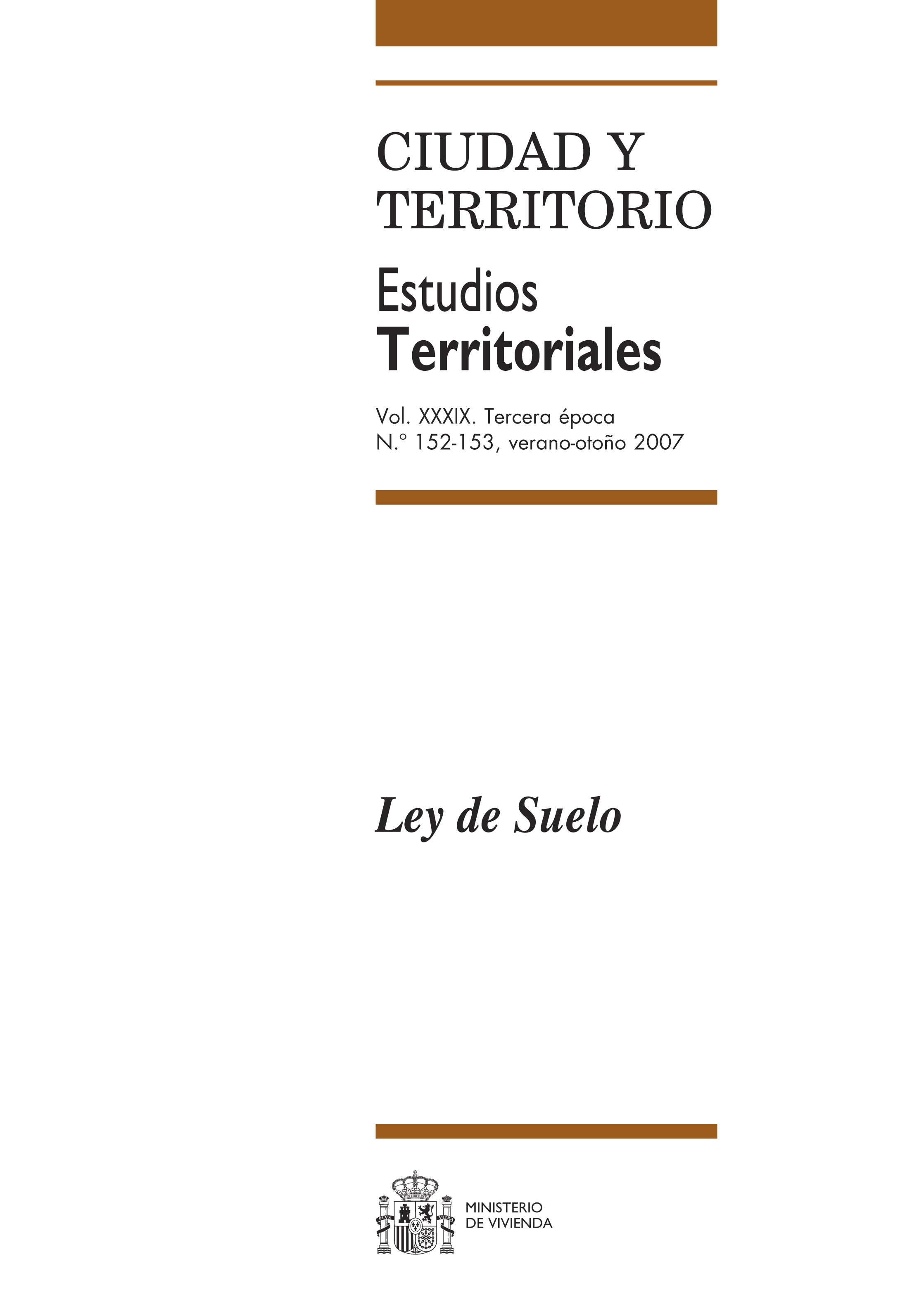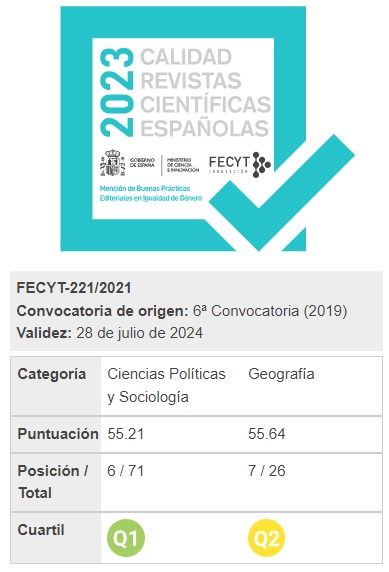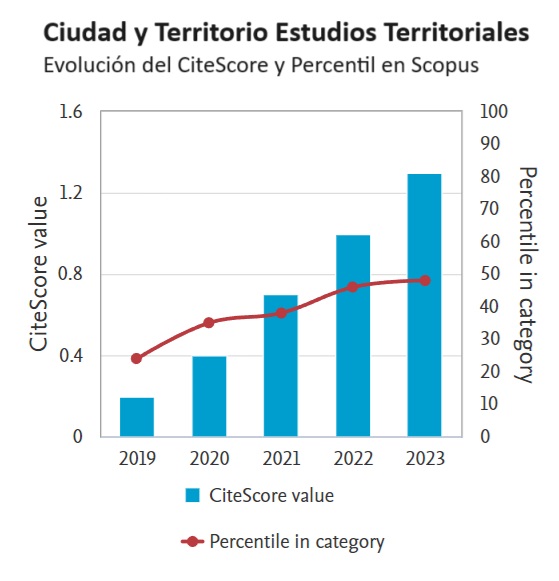The New Environmental Grounding Pro Sustainability Factors as to the Organizing and use of Territorial Ground Resources
Keywords:
Desarrollo sostenible, medio ambiente, legislación medioambiental, ley de Suelo, ordenación del territorio, sostenibilidad, urbanismoAbstract
The New Spanish Law is here considered in its environmental and sustainability aspects. To do so in the
light of present circumstances, the author begins by attempting to contrast the concepts sustainability, sustainable
development and environment to then move on to an analysis of the contents of the Law under
consideration itself. From this he adduces the traditional emphasis upon the building up of territory has been
now set against another consideration, that emphasizes those areas that must be set aside as not available
for building if the territorial whole is to be held viable. The author would further add to this conclusion a
call for moving on from an administrative emphasis upon the efficient functioning of the urban fact to one
in which the entire territory be it of whatever nature it may, is to be held the central matter in question.
The Law is seen as offering a number of noteworthy contributions amongst which rural ground use is to be
once more considered residual, an attempt is to be made to slow down the humans-first consideration of ground
use by limiting urban growth, prior environmental impact curbs are to become obligatory to any project information
but above all its major contribution is here seen as its making it evermore more difficult to alter
the scheduled definition as to use or even in any way cut into such nature reserves covered by the provisions
of Red Natura 2000.
Downloads
Downloads
Published
How to Cite
Issue
Section
License
Copyright (c) 2007 José Fariña Tojo

This work is licensed under a Creative Commons Attribution-NonCommercial-NoDerivatives 4.0 International License.
Considering the provisions of the current legislation on Intellectual Property, and in accordance with them, all authors publishing in CyTET give -in a non-exclusive way and without time limit- to the Ministry of Transport, Mobility and Urban Agenda the rights to disseminate, reproduce, communicate and distribute in any current or future format, on paper or electronic, the original or derived version of their work under a Creative Commons Attribution-NonCommercial-NoDerivative 4.0 license International (CC BY-NC-ND 4.0), as well as to include or assign to third parties the inclusion of its content in national and international indexes, repositories and databases, with reference and recognition in any case of its authorship.
In addition, when sending the work, the author(s) declares that it is an original work in which the sources that have been used are recognized, committing to respect the scientific evidence, to no longer modify the original data and to verify or refute its hypothesis. Author(s) also declare that the essential content of the work has not been previously published nor will it be published in any other publication while it is under evaluation by CyTET; and that it has not been simultaneously sent to another journal.
Authors must sign a Transfer of Rights Form, which will be sent to them from the CyTET Secretariat once the article is accepted for publication.
With the aim of promoting the dissemination of knowledge, CyTET joins the Open Journal Access (OA) movement and delivers all of its content to various national and international indexes, repositories and databases under this protocol; therefore, the submission of a work to be published in the journal presupposes the explicit acceptance by the author of this distribution method.
Authors are encouraged to reproduce and host their work published in CyTET in institutional repositories, web pages, etc. with the intention of contributing to the improvement of the transfer of knowledge and the citation of said works.








 Enlace a CyTET en Linkedin
Enlace a CyTET en Linkedin